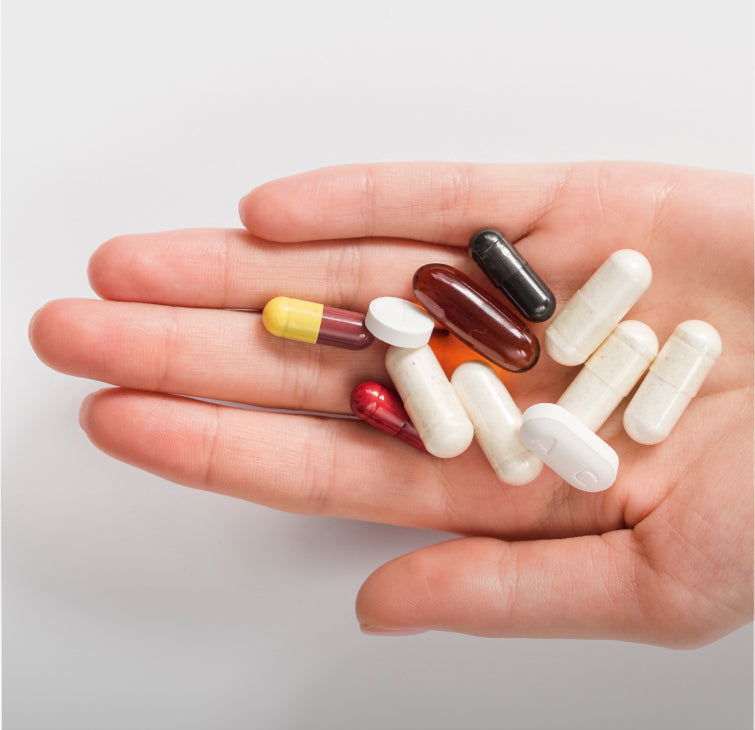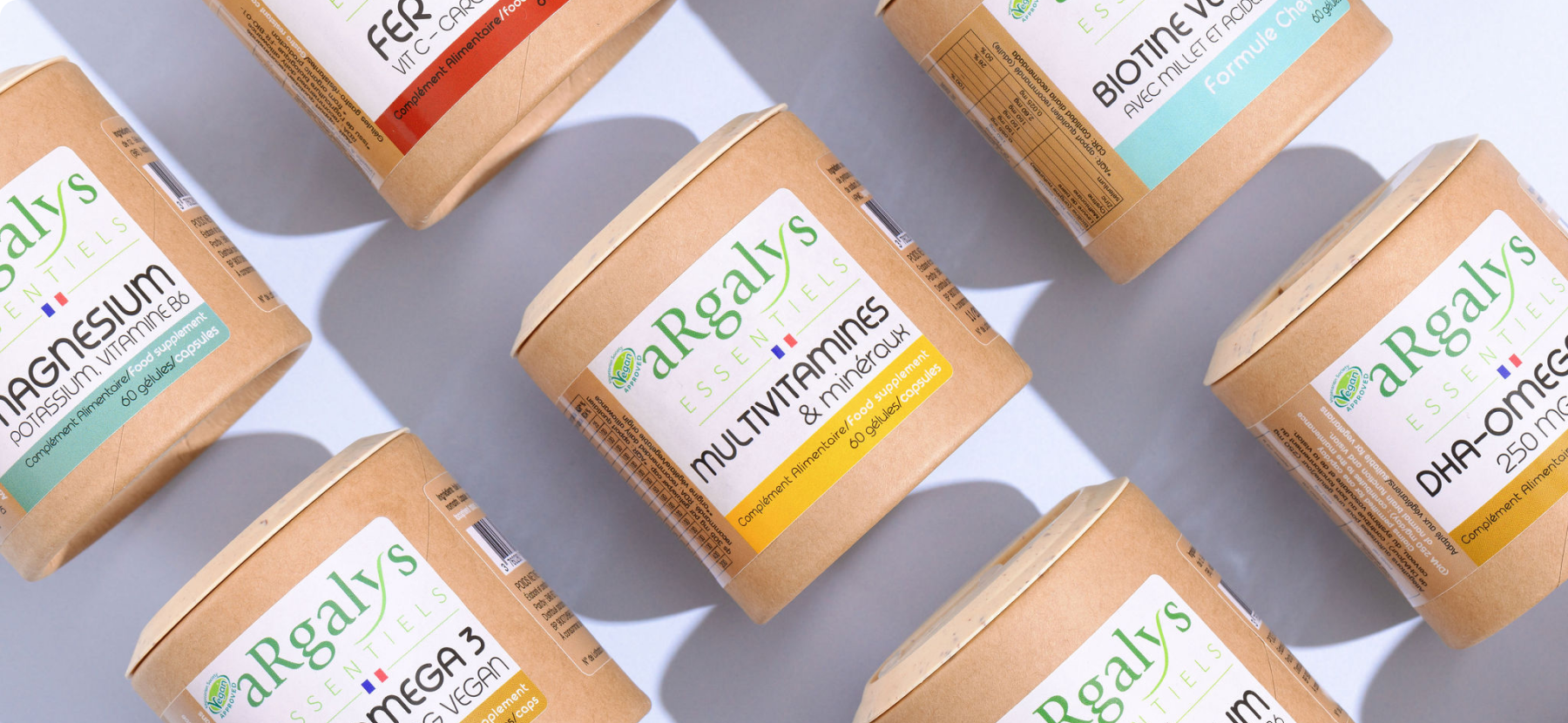Mercury is a heavy metal that is highly toxic to the body and is present in the air and certain foods: see the recent example of contaminated tuna cans. Once ingested, it is difficult to eliminate and tends to accumulate in the organs, which increases its harmful effects.
Selenium , an essential trace element, plays an important protective role in limiting the accumulation of mercury in the body.
This article summarizes the role of selenium , the dangers of mercury, and how to incorporate selenium into your diet or through food supplements for optimal protection.
What is selenium and its role in the body?
Selenium is an essential trace mineral for the body. It is involved in many vital enzymatic reactions, including those of selenoproteins , enzymes with antioxidant, immune and hormonal functions. These proteins neutralize free radicals and protect cells from oxidative stress, a key factor in aging and chronic diseases.
Selenium also plays a major role in thyroid metabolism . It participates in the conversion of thyroxine (T4) to triiodothyronine (T3), the active hormone essential for regulating energy metabolism. In addition, it supports the immune system by modulating inflammatory responses and promoting optimal defense against infections.
Selenium deficiency can lead to a weakened immune system, thyroid dysfunction, and increased vulnerability to attacks from heavy metals such as mercury.
What is Mercury: a poison for the body
Mercury is a heavy metal, present in the environment both through natural causes (volcanic eruptions primarily) but mainly human causes.
Coal mining and combustion are the primary sources of mercury release into the atmosphere. The air in some metropolitan areas can have mercury levels that exceed natural levels by more than 500%. Rainfall and runoff carry mercury into the oceans, which explains its accumulation in marine life (fish and shellfish).
Mercury can be present in the body in two forms: simple mercury or methylmercury, an even more toxic organic compound. The WHO considers mercury to be one of the 10 most dangerous pollutants for health.
Until about ten years ago, mercury was also present in common health products such as mercurochrome and dental fillings!
What is the maximum weekly mercury dosage?
The European Food Safety Authority (EFSA) has established the tolerable weekly intake (TWI) at 4 μg/kg of body weight for inorganic mercury and 1.3 μg/kg for methylmercury . Measurements carried out in European populations show that these thresholds are already mostly reached or even largely exceeded among heavy consumers of fish and salt.
A blood level of less than 6.4 µg of mercury per litre is considered satisfactory (EFSA) and a concentration above 20 µg/litre is a cause for concern.
What are the effects of mercury on the human body?
Mercury has toxic effects on the brain and nervous system, lungs, skin, and eyes.
It is particularly harmful to the healthy development of fetuses (exposed through the mother's blood) and young children. A study in Spain, a major fish-consuming country, showed that 12% of pregnant women had mercury levels above EFSA standards.
The European Environment Agency estimates that 1.8 million European babies are born each year with mercury levels above safe limits!
What foods contain mercury?
Polluted air is a vector of mercury contamination but the main sources of mercury contamination are food:
- Sea salt
- The fish
- Mainly crustaceans.
The mercury content of fish depends mainly on two factors:
- Their position in the food chain: large fish (which eat small ones) accumulate more mercury
- The source basin: Marine pollution varies from one area to another. Generally speaking, enclosed seas with populated shores are the most polluted (Baltic Sea, Mediterranean Sea, Black Sea).
In 2022, health authorities lowered the permitted mercury thresholds for the marketing of salt (0.1 mg per kg) and fish, but with some inconsistency. Most species have a lowered threshold of 0.3 mg/kg, but some, including tuna, have a tolerance of 1 mg/kg.
Only a small proportion of the ingested mercury (about 15%) is absorbed through the intestinal barrier, but this is still enough to quickly reach the maximum threshold for a frequent fish consumer.
For example: 700g of fish per week provides 700µg of mercury (1mg per kilo) of which 15% is absorbed, i.e. approximately 100µg.
How selenium works against mercury
Scientific studies on the interaction of selenium and mercury all provide converging results: selenium neutralizes mercury and particularly methylmercury . Selenium reduces the bioavailability of mercury and promotes its urinary elimination by the formation of methylmercury-selenol complexes. This mechanism has been demonstrated in fish and in the laboratory.
It should also be noted that this neutralization of mercury also eliminates the selenium involved , and therefore this mechanism increases the body's need for Selenium so that the enzymatic reactions in which it is permanently involved are maintained.
How to get enough selenium every day?
Maintaining adequate levels of selenium is essential to preserve its protective benefits.
The recommended daily intake is 70 µg for adults and 85 µg for breastfeeding women . However, these requirements may increase in cases of increased exposure to mercury or in certain conditions such as pregnancy, where mercury toxicity can have serious repercussions on fetal development.
Which foods are richest in selenium?
Selenium is present in the majority of foods, both plant and animal, but its concentration is very variable and difficult to predict:
In plants, the main source in everyday food, it depends heavily on the content of the soils where they are grown. Some regions have soils naturally rich in selenium, but this does not exclude deficiencies linked to intensive production. Brazil nuts are known for their richness in selenium , but they remain a rare food in the European diet!
In animal products from livestock farming (meat, eggs, dairy), it is also the content of the livestock feed that determines its concentration.
Fish and seafood are a significant source of selenium (but also of mercury in most cases!).
In practice, a varied and balanced diet provides a level of selenium that allows any deficiency to be avoided (more than 40µg per day) but it is difficult to estimate actual intakes since the average levels attributed to foods are not very reliable.
Can you take selenium as a dietary supplement?
As a result of this difficulty in estimating dietary intake, selenium supplementation is particularly beneficial for populations sensitive to and exposed to heavy metals.
This is especially true for pregnant women , large fish eaters , and people living in polluted areas.
The dosage of supplementation should remain moderate, but the risk of excess is low. The maximum tolerable dose is estimated at 400 µg per day (i.e. 5 times the recommended daily dose ) .
For example: a supplementary intake of 70/80µg combined with a dietary intake of 50µg remains well below the risk threshold but increases the capacity to neutralize mercury.
Food supplements containing selenium, such as those in the Argalys range ( Multivitamins , Zinc , Hair Formula , etc.) , offer a practical and safe solution. Formulated with adapted dosages, they allow controlled supplementation, ideal for the most at-risk populations.
Conclusion: Selenium helps combat mercury toxicity
Selenium helps protect the body from the harmful effects of mercury. By forming inactive complexes with this heavy metal, it reduces its absorption and promotes its elimination. Incorporating selenium-rich foods into your diet or opting for appropriate supplementation is an effective strategy for people exposed to high levels of mercury .
To protect your health against this threat, adopt a balanced diet, diversify your sources of selenium , and consider, if necessary, food supplements to ensure sufficient intake.
Bibliography:
- ScienceDirect, "Interaction between mercury and selenium", https://www.sciencedirect.com/science/article/abs/pii/S0161813X20301546
- EFSA (2012), "Scientific Opinion on the risk to public health from the presence of mercury in food", https://www.efsa.europa.eu/en/efsajournal/pub/2985
- EFSA (2014), "Benefits and risks of seafood consumption", https://www.efsa.europa.eu/en/efsajournal/pub/3761
- Evaluation of blood mercury and serum selenium levels in pregnant women, Madrid, Spain, https://www.sciencedirect.com/science/article/abs/pii/S0946672X19303888
- https://www.horizons-mag.ch/2017/04/03/the-world-map-of-a-trace-element/
- https://www.eea.europa.eu/fr/articles/le-mercure-une-menace-persistante
 04 74 03 98 80
04 74 03 98 80










